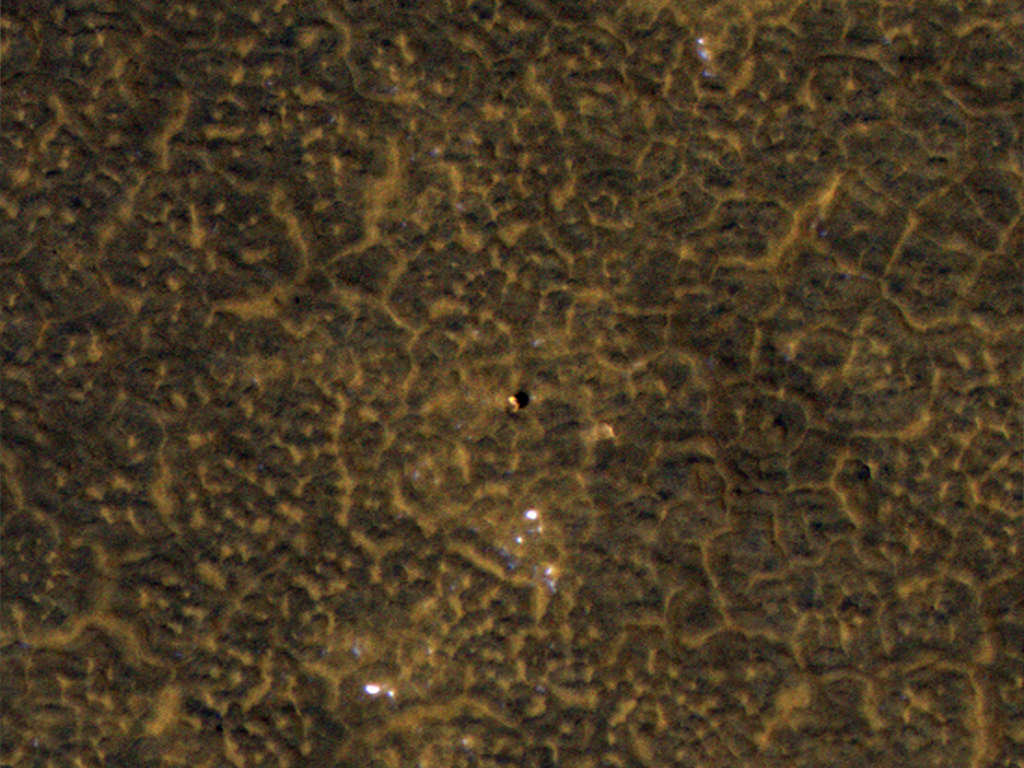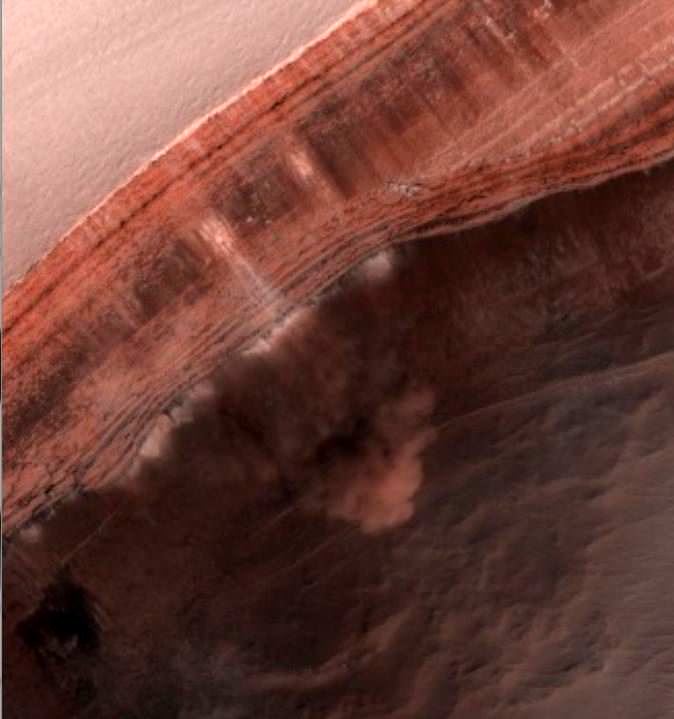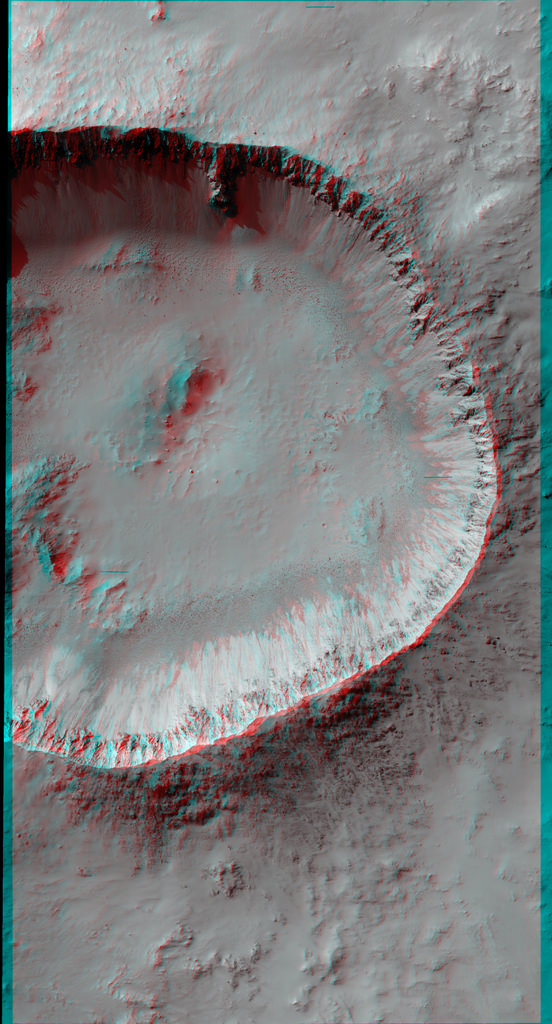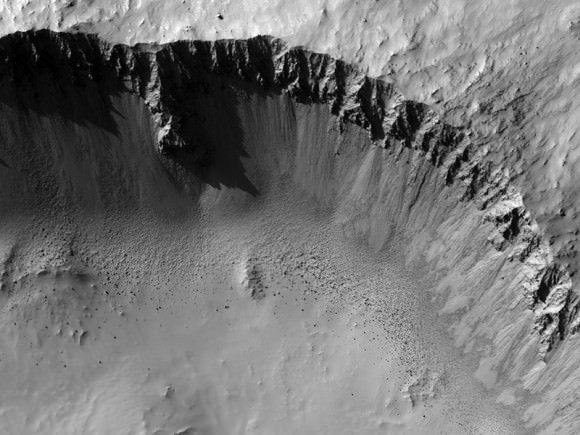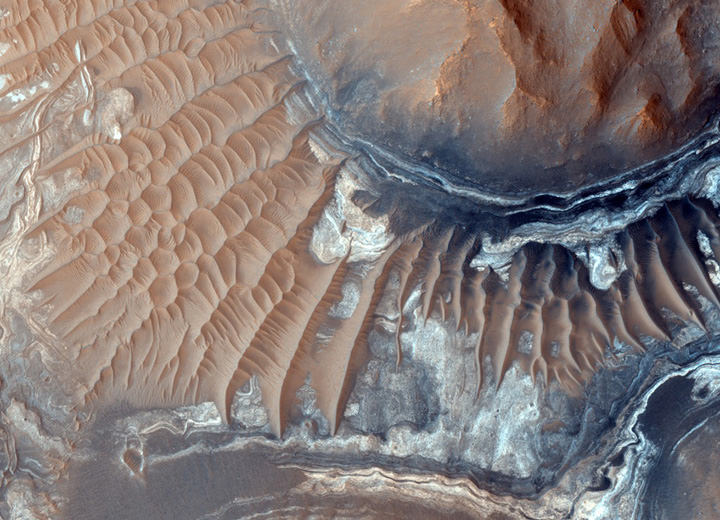[/caption]
I spy Phoenix! said the HiRISE camera on board the Mars Reconnaissance Orbiter! This new image acquired on January 26, 2012 shows that the Phoenix lander and its backshell are still visible from Mars’ orbit. The parachute, seen in earlier images, is probably about 130 meters south of where this picture ends. This is one of a series of images to monitor frost patterns at the Phoenix landing site, said HiRISE Principal Investigator, Alfred McEwen, adding that this new images shows almost the same appearance of the hardware as 1 Mars years ago, in 2010. See larger versions of this image at the HiRISE website.
See below for comparison images from orbit from 2008, shortly after Phoenix landed and 2010, after the mission had ended.

In these images, also from the Mars Reconnaissance Orbiter, signs of severe ice damage to the lander’s solar panels show up in the 2010 image, with one panel appearing to be completely gone. The Phoenix team says this is consistent with predictions of how Phoenix could be damaged by harsh winter conditions. It was anticipated that the weight of a carbon-dioxide ice buildup could bend or break the solar panels.
Source: HiRISE

